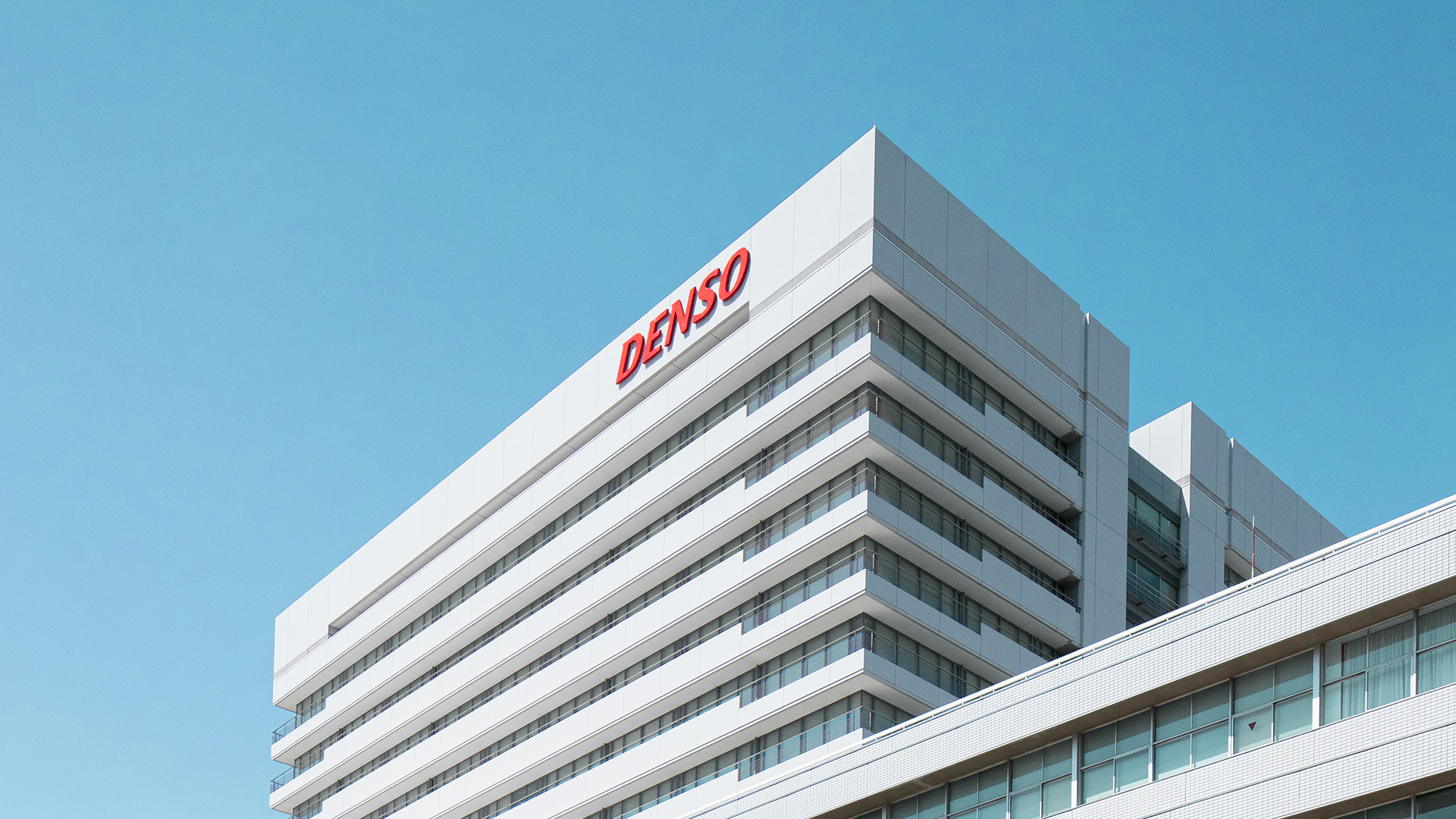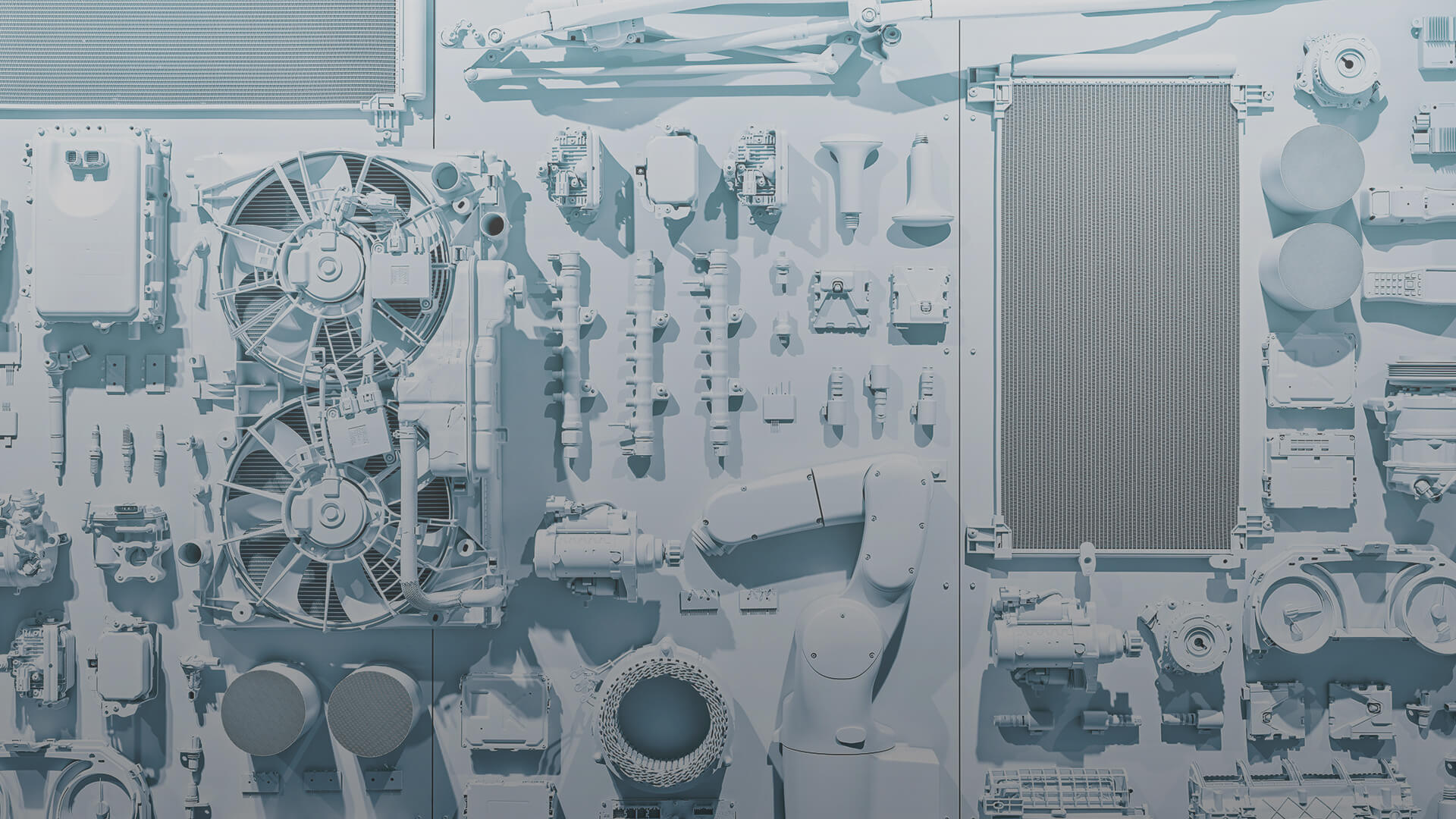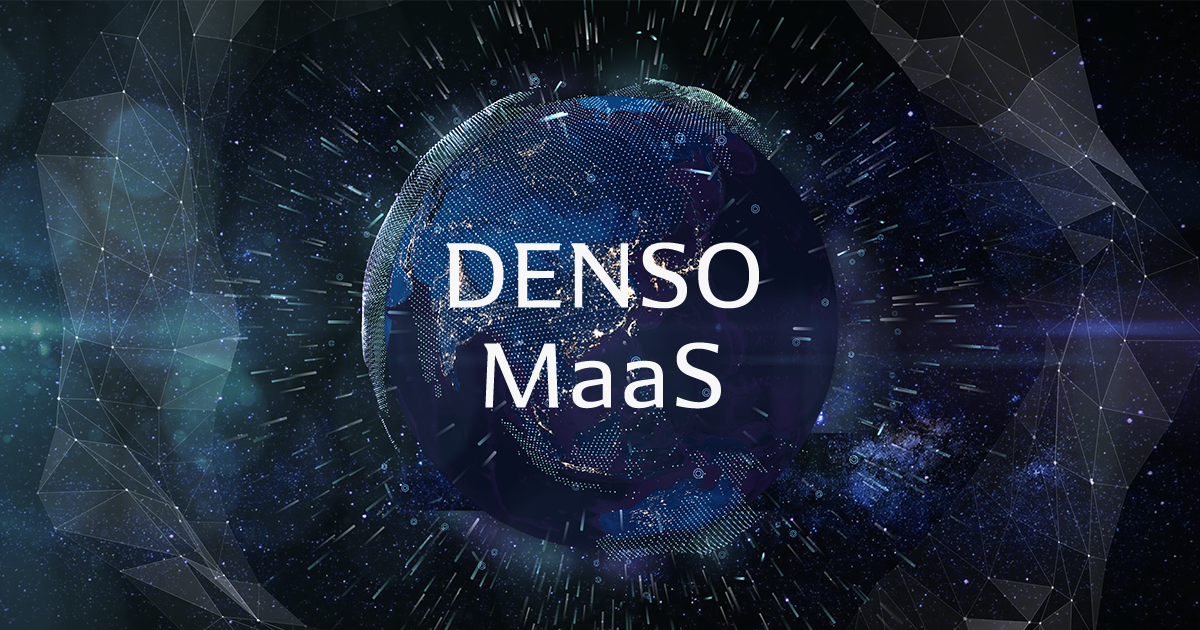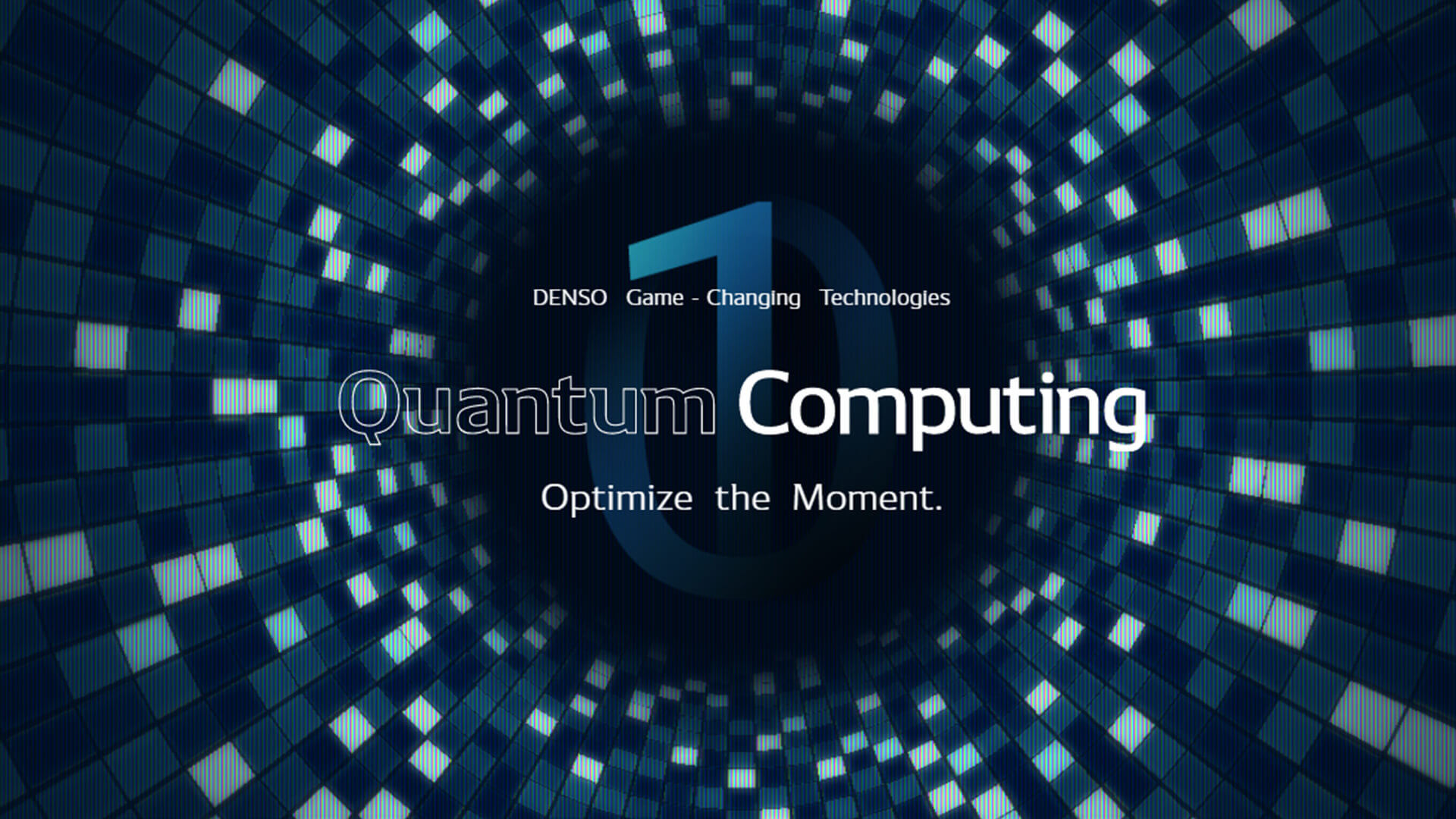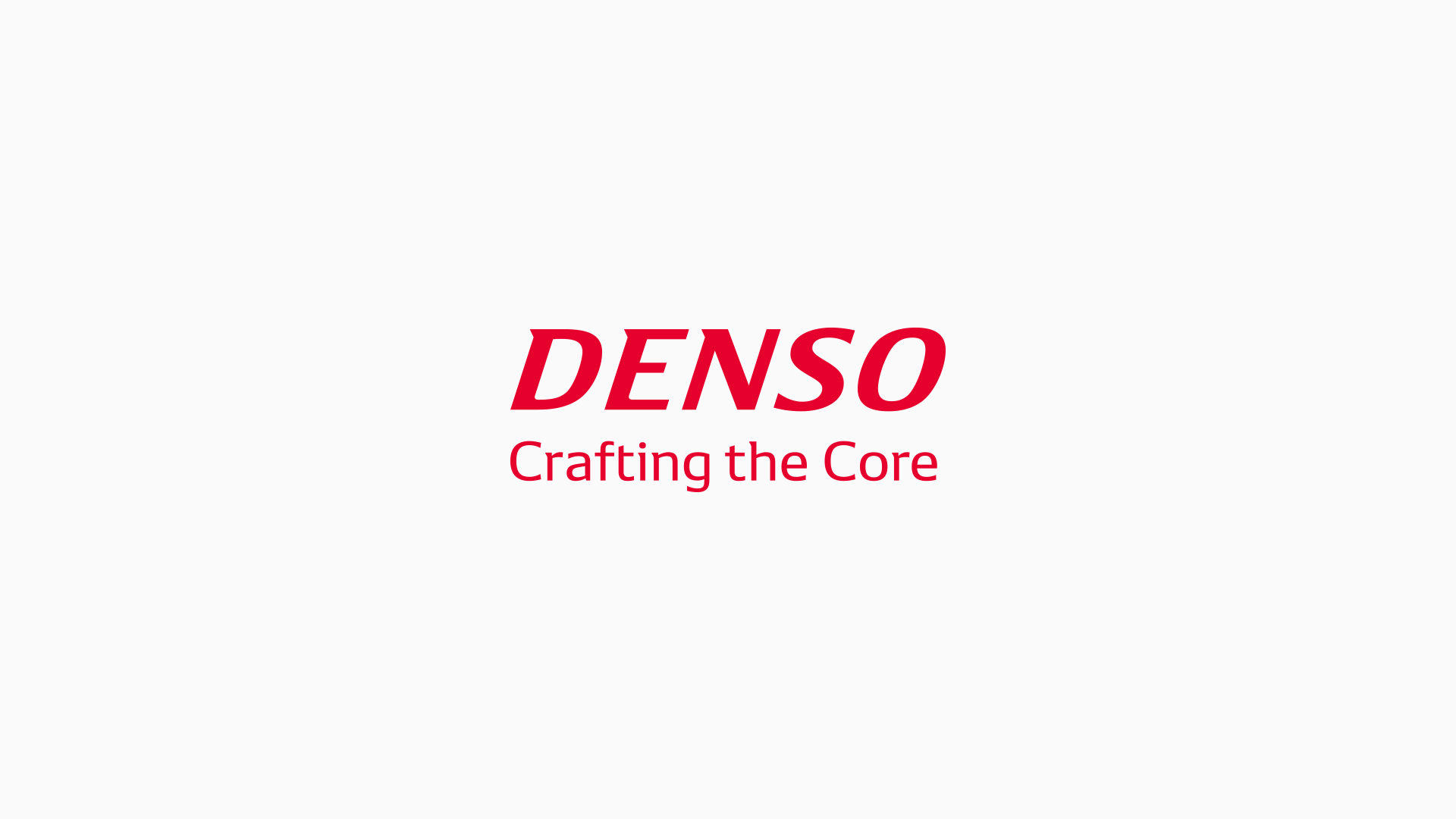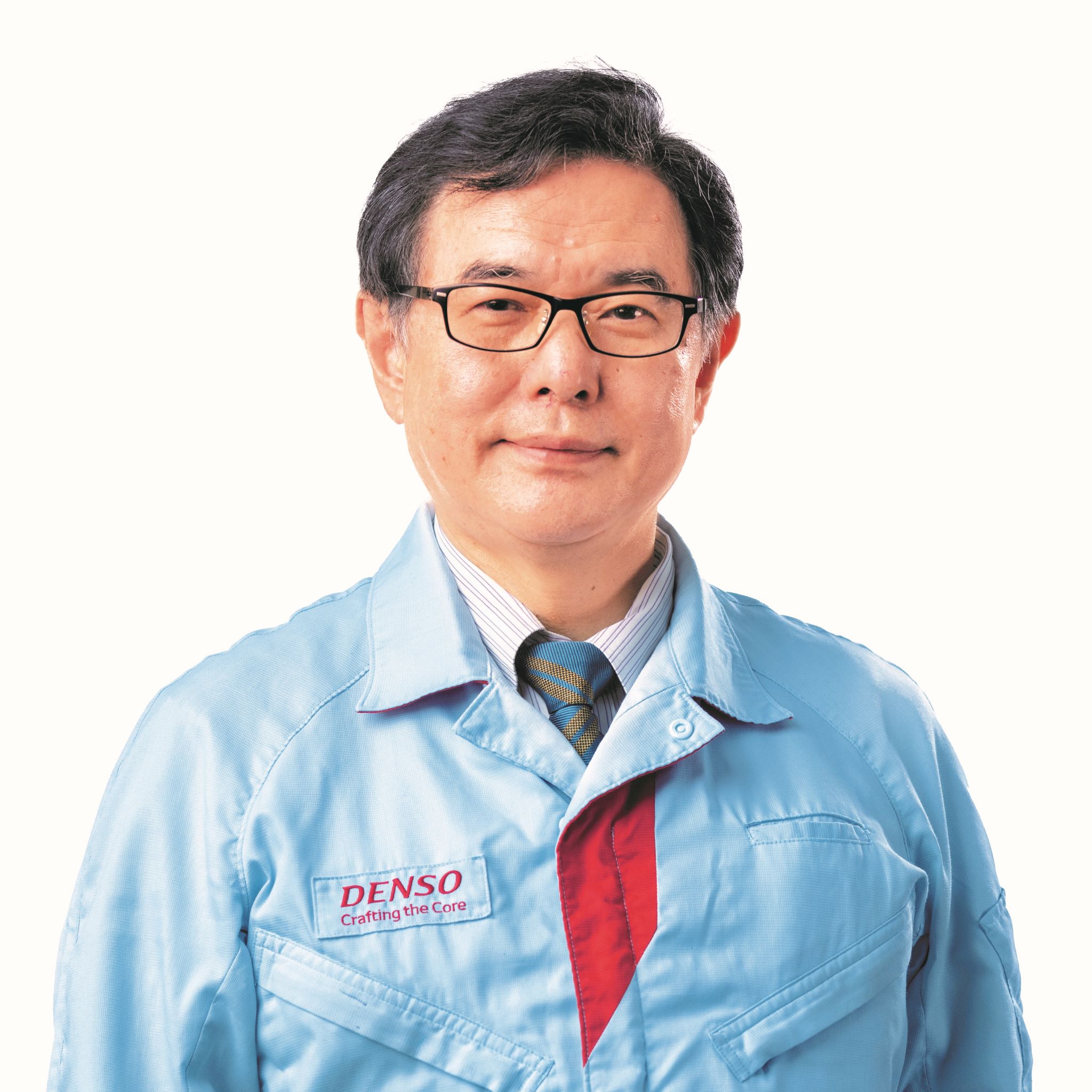CTO MESSAGE
Promoting Semiconductor Strategies Aimed at Maximizing the Value of Green and Peace of Mind
-
Yoshifumi Kato : Chief Technology Officer (CTO), Senior Executive Officer
Striving to Ascertain the Changing Times So That We Can Continue to Create New Value
As we enter the period of a once-in-a-century paradigm shift, I believe it is important to once again faithfully practice the DENSO Creed’s ideal of “be pioneering, innovative, and creative,” if we are to overcome this challenging time and lead the industry into the next generation. This ideal is reflected in the Mid-term Policy for 2025, which sends a message to all employees to “aim for world-first and world-best offerings,” helping them renew their awareness therein.
Starting with our R&D activities, our intellectual capital has served as a source of DENSO’s competitiveness, and over the past five years we have spent a cumulative total of roughly ¥2.4 trillion on these activities, with a focus on the domains of green and peace of mind. Amid these activities, we have seen the growing importance of not only software technologies but also semiconductors as a foundation for implementing efforts in these domains, and our stakeholders have shown a high level of interest in semiconductors as well. Furthermore, although semiconductors are one form of technology, the way you need to respond to them differs depending on the domain or technology in which they are used. We have divided semiconductors into three areas: microcomputers and System-on-a-Chip (SoC), power and analog, and sensors, and will draft and implement development and procurement strategies for each area going forward.
Strategy for Microcomputers and SoC
Promoting Two Activities to Secure Stable Procurement of Advanced Logic Semiconductors: “Development and Standardization and Deepening the Cooperation with Specialized Manufacturers” and “Activities to Maintain the Supply Chain”
As we make progress with the division of labor for microcomputers and SoC into specifications, design, and manufacture, a greater degree of miniaturization is required. To that end, ensuring a stable procurement network together with specialist manufacturers is the most important initiative for securing semiconductor supply. From an in-vehicle perspective, we are striving to present strategic specifications and promote standardization and are also working to secure numerous production bases and reform our semiconductor procurement structure “Targeting 2025.” Under this structure, we are working to promote the standardization of microcomputers and reduce discrepancies between the automotive and semiconductor industries with the goal of making our supply chain more resilient.
Strategy for Power and Analog Semiconductors
Developing and Manufacturing In-House “Devices & Wafers” and “Manufacturing Processes” to Maximize System Competitiveness
Striving to develop tough semiconductors, we have been producing high-voltage power semiconductors and analog semiconductors for over half a century. For high-voltage power semiconductors, we have been working with strategic partners to produce large-diameter silicon wafers and have been pursuing the full-scale launch of SiC, which contributes to improved energy performance of BEVs. With regard to analog semiconductors, we have been accelerating the development of tough semiconductors that achieve the performance required for in-vehicle environments as well as application-specific integrated circuits, which thoroughly meet the needs of customers. By 2025, we aim to achieve ¥500.0 billion in revenue from internally manufactured semiconductors.
Strategy for Sensors
Strengthening Our “Judgment Capabilities” for Current Trends and “Realization Capabilities” for the Future to Achieve Competitive Strategic Partnerships
For environmental recognition sensors that underpin safety system products, we are working with semiconductor vendors, particularly ones with which we are engaging in strategic collaboration, to accurately communicate the need for in-vehicle sensors and establish win-win relationships in anticipation of rapidly changing technological trends. By doing so, we are pushing forward with development activities. In addition, we are bolstering our planning capabilities for the kinds of semiconductors that will be needed in the future of mobility as well as system-related technological capabilities that will allow us to maximize semiconductor sensing performance. By 2025, we aim to develop compact, high-performance environment recognition sensors with advanced driving assistant features of level three or higher.



